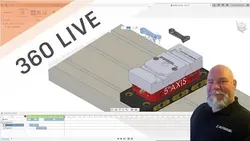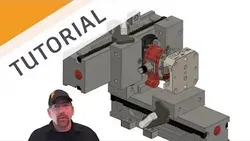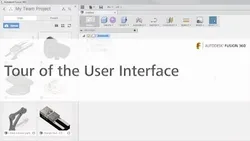
Create your own electronics parts in Fusion 360

This course provides an overview of the electronics libraries available in Fusion 360, and teaches how to create a symbol and footprint for custom electronics parts. Participants will learn how to use the tools available in Fusion 360 to create their own parts, and gain the skills to design and manufacture their own electronics.▼
Course Feature
![]() Cost:
Cost:
Free
![]() Provider:
Provider:
Youtube
![]() Certificate:
Certificate:
Paid Certification
![]() Language:
Language:
English
![]() Start Date:
Start Date:
On-Demand
Course Overview
❗The content presented here is sourced directly from Youtube platform. For comprehensive course details, including enrollment information, simply click on the 'Go to class' link on our website.
Updated in [February 21st, 2023]
What does this course tell?
(Please note that the following overview content is from the original platform)
Create your own electronics parts in Fusion 360: Video 1 Electronics Libraries Overview.
Create your own electronics parts in Fusion 360: Video 2 Making a symbol.
Create your own electronics parts in Fusion 360: Video 3 Making a footprint.
Create your own electronics parts in Fusion 360: Video 4 Making a 3D Package.
Create your own electronics parts in Fusion 360: Video 5 Making a Device.
We consider the value of this course from multiple aspects, and finally summarize it for you from three aspects: personal skills, career development, and further study:
(Kindly be aware that our content is optimized by AI tools while also undergoing moderation carefully from our editorial staff.)
This course is perfect for anyone interested in creating their own custom electronics parts in Autodesk Fusion 360. Participants will learn the fundamentals of Autodesk Electronics Libraries, including how to import, export and edit parts. They will also learn how to create symbols, footprints, 3D packages and complete integrated devices. By the end of the course, participants will be able to confidently design, modify and export electronic parts in Autodesk Fusion 360. This course is ideal for engineers, designers, makers, hobbyists, and anyone interested in learning how to create their own custom electronics parts.
[Applications]
Upon completion of this course, participants should be able to confidently design, modify and export electronic parts in Autodesk Fusion 360. They should be able to use the Autodesk Electronics Libraries to import, export and edit parts, create symbols, create footprints, construct 3D packages, and create a complete integrated device. Participants should be able to apply their newfound knowledge to create custom electronics parts for their own projects.
[Career Paths]
1. Electronics Design Engineer: Electronics Design Engineers are responsible for designing, developing, and testing electronic components, circuits, and systems. They must have a strong understanding of electrical engineering principles and be able to use computer-aided design (CAD) software to create and modify electronic parts. With the increasing demand for electronic components in consumer products, the demand for Electronics Design Engineers is expected to grow significantly in the coming years.
2. Electronics Manufacturing Engineer: Electronics Manufacturing Engineers are responsible for overseeing the production of electronic components and systems. They must have a strong understanding of electrical engineering principles and be able to use computer-aided manufacturing (CAM) software to create and modify electronic parts. With the increasing demand for electronic components in consumer products, the demand for Electronics Manufacturing Engineers is expected to grow significantly in the coming years.
3. Electronics Test Engineer: Electronics Test Engineers are responsible for testing and verifying the performance of electronic components and systems. They must have a strong understanding of electrical engineering principles and be able to use computer-aided testing (CAT) software to create and modify electronic parts. With the increasing demand for electronic components in consumer products, the demand for Electronics Test Engineers is expected to grow significantly in the coming years.
4. Electronics Technician: Electronics Technicians are responsible for installing, maintaining, and repairing electronic components and systems. They must have a strong understanding of electrical engineering principles and be able to use computer-aided troubleshooting (CAT) software to diagnose and repair electronic parts. With the increasing demand for electronic components in consumer products, the demand for Electronics Technicians is expected to grow significantly in the coming years.
Course Provider





